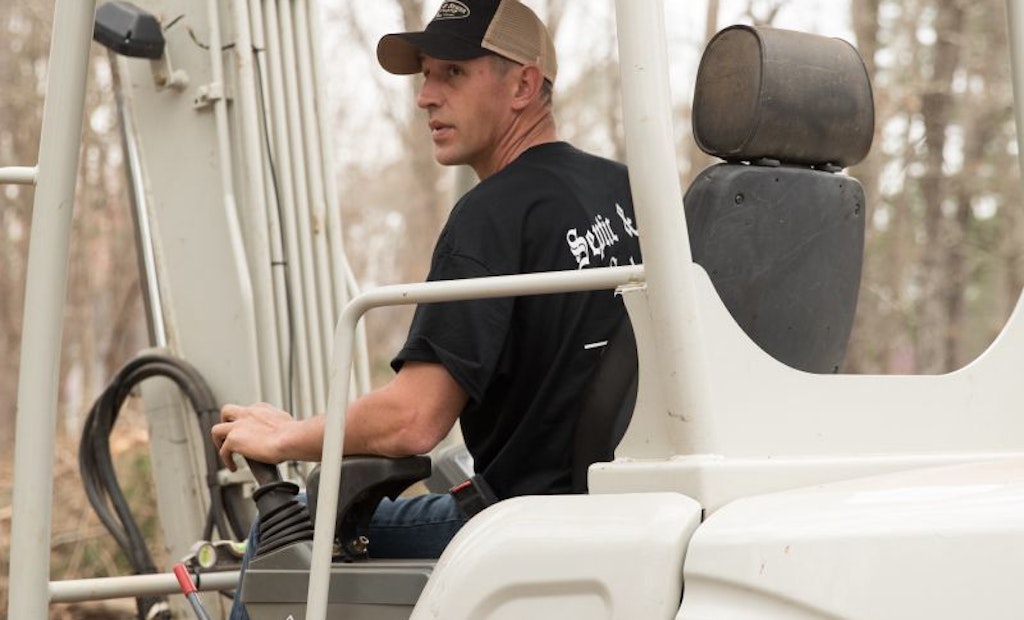
Josh Wood operates a Takeuchi TB260 excavator, removing tree stumps for an install in Snellville, Georgia. (Photo by Jamie Hopper)
Interested in Systems/ATUs?
Get Systems/ATUs articles, news and videos right in your inbox! Sign up now.
Systems/ATUs + Get AlertsJosh Wood says he’s done only three septic jobs in five years that he would consider easy or routine. The rest have been tough jobs that bring homeowners to his Septic and Sewer Solutions in Buford, Georgia, as a last resort.
For example, last September’s typical replacement involved a rental home in Lawrenceville, Georgia, with ponded wastewater running into a ditch, through the culvert under the road, and into a creek. Wood had a permit for 195 feet of chambers by Infiltrator Water Technologies, but rejected it when he saw the home’s water bill. “The renters were heavy users,” he says.
Meeting setbacks left a 90-by-10-foot drainfield at the rear of the 290-foot-deep 1-acre lot with 5 percent slope and granite ledge. Access to the backyard was through a narrow gap between the side of the house and a garden shed.
With little room for the replacement drainfield, Wood believed that Advanced Enviro-Septic pipe from Presby Environmental Inc. (PEI) was the solution. The approved design included a 1,500-gallon, two-compartment concrete septic tank, 1,000-gallon dose tank with 1/2 hp Liberty pump (tanks by McDaniel Concrete Products), and 180 feet of Advanced Enviro-Septic pipe on the slope.
The stub-out to the original septic tank was at the front of the home, and the soil there was saturated with wastewater. “Pulling rock out of the ground leaves voids, so we leveled and bedded the house lateral trench and tank holes with 18 tons of No. 57 stone, dewatering 17,000 gallons as we went,” Wood says. Workers half-filled the tanks to prevent flotation.
Only the Takeuchi TB216 tracked mini-excavator slipped through the gap between the two buildings — and nearly sank in the process. To avoid retracing his tracks, Wood used a 3.5-cubic-yard steel bedding box from the construction trade. The box rode behind the excavator, the skid-steer driver loaded it with stone or sand, and Wood transported it to the pipe, bedding as he went.
“I pay $560 a load for No. 57 stone and lose 10 percent of what hits the ground,” Wood says. “The box confines bedding material and minimizes stone loss.”
Wood also used a Piper 200 pipe laser from Leica Geosystems GR (Hexagon). “Because it throws a constant beam, I never have to stop to listen for the beep-beep-beep telling me I’m on grade,” he says. “I just keep digging.”





